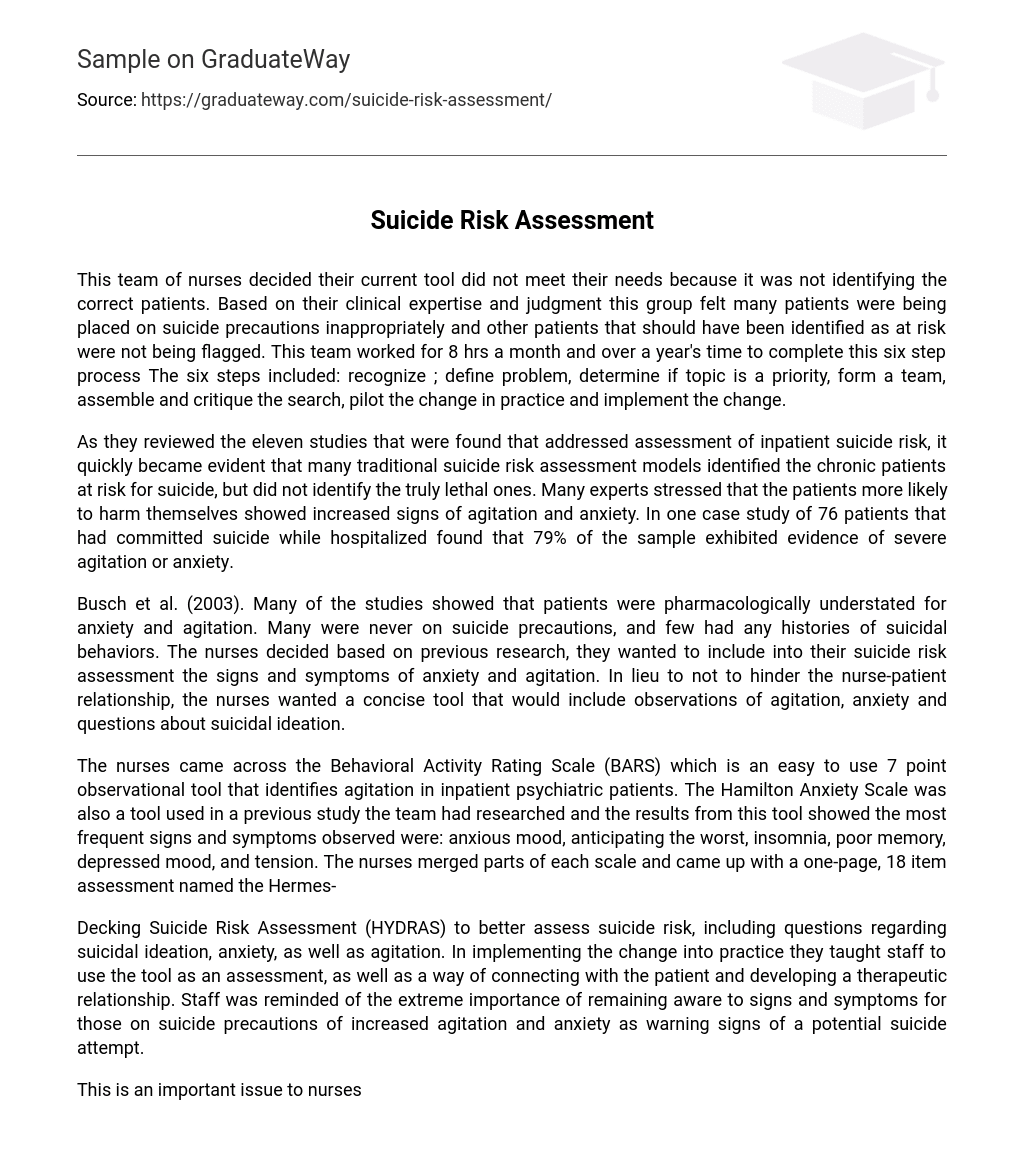This team of nurses decided their current tool did not meet their needs because it was not identifying the correct patients. Based on their clinical expertise and judgment this group felt many patients were being placed on suicide precautions inappropriately and other patients that should have been identified as at risk were not being flagged. This team worked for 8 hrs a month and over a year’s time to complete this six step process The six steps included: recognize ; define problem, determine if topic is a priority, form a team, assemble and critique the search, pilot the change in practice and implement the change.
As they reviewed the eleven studies that were found that addressed assessment of inpatient suicide risk, it quickly became evident that many traditional suicide risk assessment models identified the chronic patients at risk for suicide, but did not identify the truly lethal ones. Many experts stressed that the patients more likely to harm themselves showed increased signs of agitation and anxiety. In one case study of 76 patients that had committed suicide while hospitalized found that 79% of the sample exhibited evidence of severe agitation or anxiety.
Busch et al. (2003). Many of the studies showed that patients were pharmacologically understated for anxiety and agitation. Many were never on suicide precautions, and few had any histories of suicidal behaviors. The nurses decided based on previous research, they wanted to include into their suicide risk assessment the signs and symptoms of anxiety and agitation. In lieu to not to hinder the nurse-patient relationship, the nurses wanted a concise tool that would include observations of agitation, anxiety and questions about suicidal ideation.
The nurses came across the Behavioral Activity Rating Scale (BARS) which is an easy to use 7 point observational tool that identifies agitation in inpatient psychiatric patients. The Hamilton Anxiety Scale was also a tool used in a previous study the team had researched and the results from this tool showed the most frequent signs and symptoms observed were: anxious mood, anticipating the worst, insomnia, poor memory, depressed mood, and tension. The nurses merged parts of each scale and came up with a one-page, 18 item assessment named the Hermes-
Decking Suicide Risk Assessment (HYDRAS) to better assess suicide risk, including questions regarding suicidal ideation, anxiety, as well as agitation. In implementing the change into practice they taught staff to use the tool as an assessment, as well as a way of connecting with the patient and developing a therapeutic relationship. Staff was reminded of the extreme importance of remaining aware to signs and symptoms for those on suicide precautions of increased agitation and anxiety as warning signs of a potential suicide attempt.
This is an important issue to nurses and nursing in general and in particular to the nurse working on an inpatient psychiatric unit In fact the recognition that patients with suicidal ideation are not restricted to only inpatient psychiatric units. These patients start out either in a Mental Health Clinic or in the Emergency room. All nurses and health care practitioners need to be aware of these signs and symptoms to better evaluate and treat patients to insure they are safe as they await transfer to the appropriate unit or placement.





